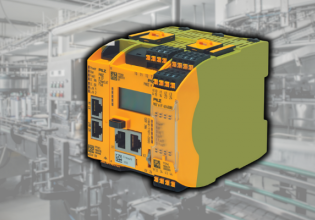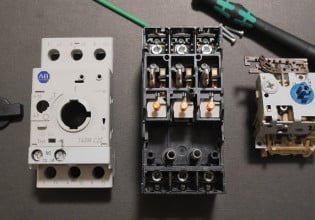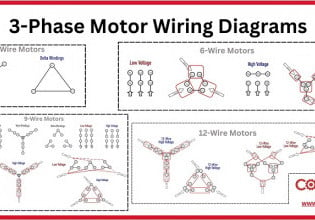Quality Protocols and Verification Master Plans for Manufacturing Facilities
Manufacturing plants must follow certain safety protocols set to them by governing bodies in their countries. Learn about key verification protocols (IQ, OQ, and PQ) and how to properly set up a verification master plan.
Verification in manufacturing industries — especially in food and pharmaceutical industries — is an important process through which the quality of the product is ensured. Ensuring the safety of a product involves checking that all components involved in manufacturing, both process and equipment, are up to required standards.

Figure 1. Manufacturing in the pharmaceutical industry must be closely monitored by verification protocols.
Verification protocols should demonstrate and prove that all machines work according to their design and the whole process is carried out according to their functional specifications The process of Verification is maintained and documented. This documentation is a requirement of the regulatory bodies of almost all the markets in the world.
What is Included in Verification Protocols?
Verification protocols are the written procedure of the verification activity. They describe what must be validated:
- Equipment as a whole
- Parts and systems of the equipment
- Process of the system or equipment
- Product to which the equipment or system is designed or meant for
They also describe how the verification activity of each component (both equipment and product) is performed:
- Test parameters of the process and equipment and
- Product characteristics
- Acceptable or reference values
Verification protocols mainly consist of:
- Installation Qualification (IQ)
- Operational Qualification (OQ)
- Performance Qualification (PQ)
Installation Qualification
Installation qualification, as its name implies, is the written evidence that the equipment has been installed according to the specification and recommendation of the manufacturer. IQ includes the following qualification tests:
- Verification and availability of all related documentation (manuals, calibration certificates)
- Verification of machine model and serial number
- Verification of the location of the machinery or equipment i.e., that said location is safe and adequate
- Physical examination for any damage or missing of any part or instrument
- Cross-check of all equipment components with the packing list
- Verification that power requirements are adequate and according to the manufacturer’s specification
- Verification of HVAC requirements (steam, compressed air, temperature)
- Verification of the computer system or interface
- Verification of the installation of the field instruments
- Verification that all safety covers and signs are installed properly at their right positions
Operational Qualification
Operational qualification is the documented proof that the operation of the equipment is being carried out according to the specification of the manufacturer and requirements of the buyer. Note that in this stage, the working of the individual component or system is verified rather than the working of the machine as a whole.
OQ includes, but is not limited to:
- Operating panel components including HMI functionality and other buttons such as start/stop/alarm reset are all present
- Operation of safety systems of the machine (emergency button, temperature protection system, door safety systems)
- Alarm verification
- Software functionality (data storage, recipe management, and print function)
- Satisfactory reading of all process parameters, including temperature, pressure, conductivity, and others. Any deviation from the actual and observed should also be noted.
- Satisfactory working of motion control mechanisms, including VFD, servo, or stepper systems
- Any abnormal noise or movement during operation
Performance Qualification
Performance qualification is the final process in the verification activity. It qualifies the whole product and process of the machine, rather than looking at individual components. Moreover, this test is performed under the conditions machines are in during the actual production process.
The Role of a Verification Master Plan
Verification is a regular activity that is performed in accordance with standards set for safety and accuracy. The planning of verification is outlined in a document called the verification master plan.
The verification master plan is an important document that reflects the whole planning and strategy of verification activities for an equipment or process. It includes:
- A list of the team members and their specific responsibilities
- Planning and frequency of each equipment for Verification
- Procedures and test methods (i.e., IQ, OQ, and PQ) to perform verification
- Deviation report
- Further steps in case of successful verification
- Further recommendations in case verification fails
Approval of the Verification Master Plan
Before verification can be carried out, all the components in the verification master plan must be approved by the heads of the production department, quality department and engineering department (depending upon the nature of verification — i.e., equipment, process, or product). Further, the verification team consists of persons representing all the concerned departments, including quality, production, and engineering.
Verification Execution
The quality department is mainly responsible for the execution of verification activities and other departments provide the necessary support.
Before the start of the year or quarter, the verification plan is circulated throughout all the concerned departments. When the verification is due, the quality department will inform the production department for its arrangements. Verification is performed in accordance with the IQ, OQ, and PQ protocols. Any deviation obtained from the verification master plan is recorded with its solution and timeline.
Approval and Documentation of Completed Verifications
Qualification protocols are filled out and duly signed by the representatives from the quality, production, and engineering departments. After the completion of the planned verification, heads of all representative departments also sign the protocol. Once completed, all necessary documentation is made part of the record. This is necessary as it enables proof of safety practices required by regulatory bodies.
What Could Happen if Verification Protocols Aren’t Met?
Verification protocols have become one of the most important and basic methods to make sure that processes and equipment are safe and up to manufacturing safety standards for critical products.
Neglecting proper protocols can lead to a variety of failures, including:
- Lowered performance of the quality department: Quality is the basic watchdog in any company and its poor performance is an alarming situation for any organization.
- Decreased customer trust: The product and company will lose the trust of the end user, which could result in a decline in market share.
- Increased rate of product failure: The product will fail to meet its standard specification causing failure of the whole batch.
- Product incompetence: Products will fail to deliver the required results, causing possible product recalls.
- Regulatory non-compliance: Almost all of the regulatory bodies around the world require that these protocol standards should be followed, performed, and documented. Non-compliance of these standards will lead to serious penalties from these regulatory bodies.
- Risk to equipment and process: If all the parameters are not followed, a risk of failure increases for both process and machinery. This results in wastage of both raw material and machinery.
What are FDA Process Verification Requirements?
In the United States, the Food and Drug Administration is responsible for the safety and standards of products sold in food, beverage, and medicine. Its basic function is to make sure that the products sold are at the highest standard and are safe for human consumption.

Figure 2. The FDA oversees proper production of products designed for human consumption in the US.
The FDA has its guidance about each and every part of food and medicine production. The same is the case with the verification process. The FDA issues its own detailed guideline for the verification process of products wanting to enter the USA market.
According to the FDA, the process verification is defined as “the collection and evaluation of data, from the process design stage through commercial production, which establishes scientific evidence that a process is capable of consistently delivering quality product.”
In its document Guidance for Industry Process Verification: General Principles and Practices, the FDA describes each and every aspect of the verification process necessary for the United States.






